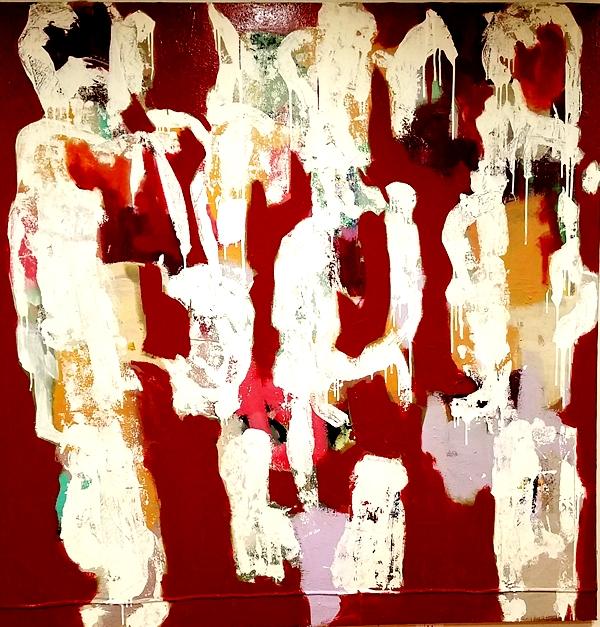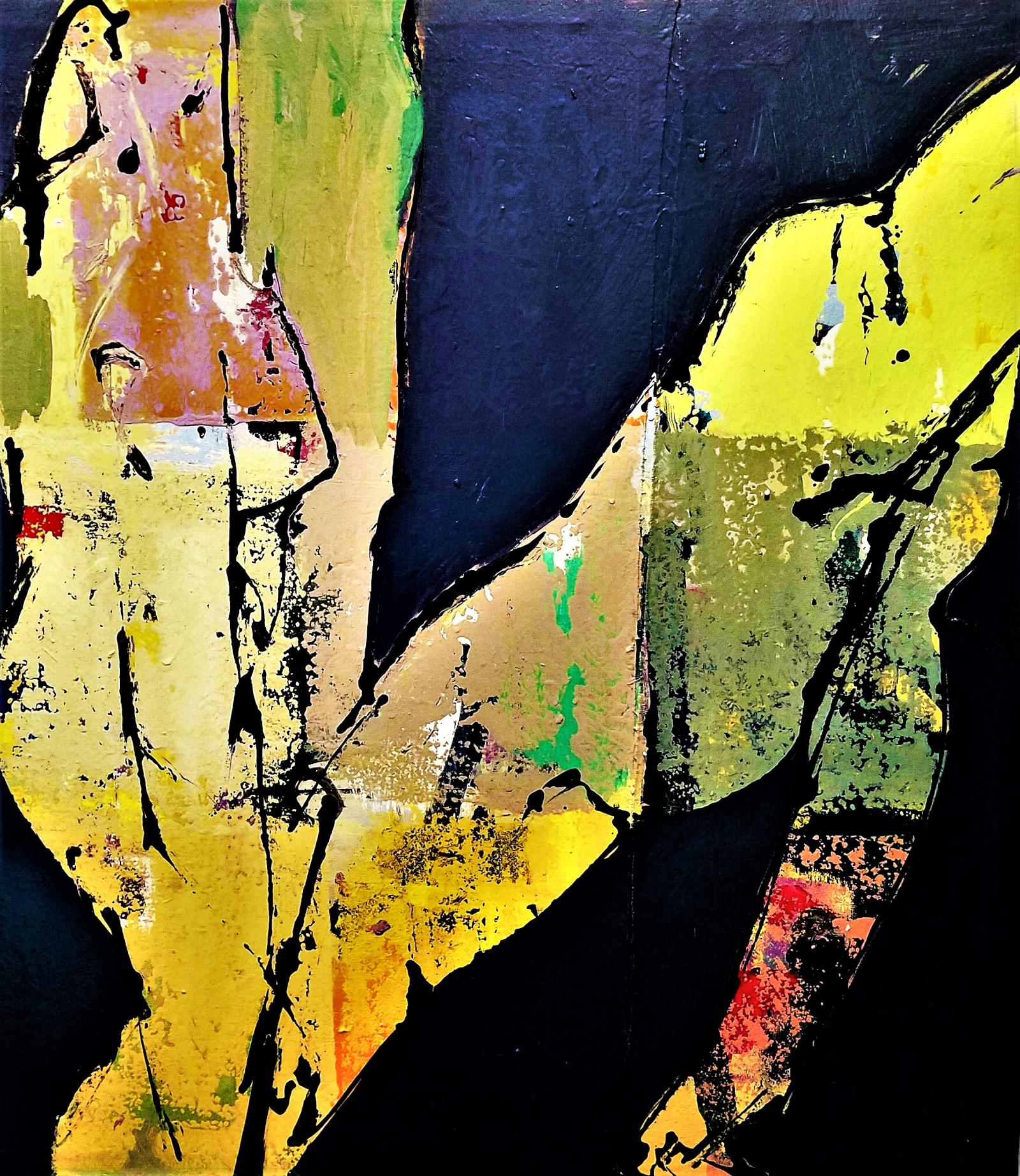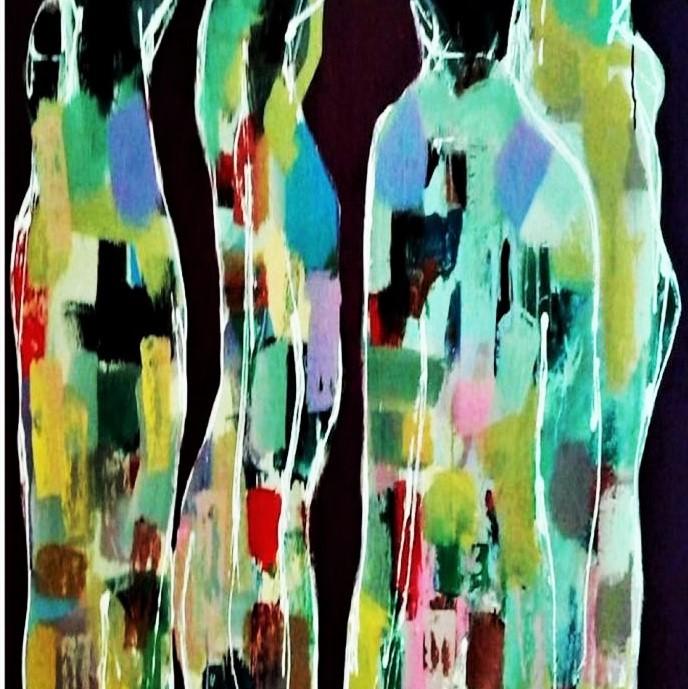My artistic work has been greatly influenced by my Cuban identity, and my own training as a mural art restorer in the historic quarters of my own city, Havana, as well as my training and studies in Fine Art, and Art History. When I started painting, my work tried to evoke the essence of ‘la Cubanidad’ or if one prefers ‘Cubanity. Cubanity is understood here as a combination of contemporary aspects of Cuba’s social evolution coupled with elements derived from cross-cultural influences such as magic, traditions, and spirituality from African and Spanish cultures. Cuban identity possesses enduring qualities in which cross-culturalism and syncretism are recurring themes that are reflected in my work. Around those themes, I tried to explore the essence of Afro-Cuban religions, and their impact in a new colonial setting; I also tried to show the intrinsic beauty found in the layers of mural paintings in vintage buildings in Old Havana that appear as a metaphor for the social and cultural fabric present in contemporary Cuban society. This vast experience restoring murals, and my fascination with layered polychromes hidden for centuries inside the walls and facades of colonial architecture served as a source of constant inspiration. The Cuban tropical light inflicting a baroque ambiance on those murals along with their physical deterioration was a major inspiration for many series centered on Havana as a topic.
In 1992, I moved to Europe and, later on, to New York. These changes in my living surroundings had an impact on my artistic world. I started to integrate my Cuban identity in the depiction of more universal themes related to humankind such as psychology, philosophy and religion, seeking a sense of universality. My focus shifted and I was intrigued by issues such as identity in a multicultural and global world, solitude and loneliness, relationships, and the architecture of feelings. My Cuban perspective has gone global although it functions as my anchor in this globalized society we live in.
I normally use ‘gestural painting’ and ‘surrealist automatism’, both methods derived from Abstract Expressionism, to deliver the above mentioned concepts, and because I consider them the most suitable vehicle for my vision on how the world and society evolve around me.
As a global citizen, I perceive the political, social, and cultural events of this world, and try to reflect these events through a broad, and unencumbered freedom of expression. I rely on the subtle negotiation between the sources of occurrences and my conscience where ideas, concepts, and images are configured.
I am always questioning the process of creating images, being aware that in Art, the object and its representation can be similar, but they are definitely not the same. The ‘object’ in itself differs from ‘the object perceived by us’, being the latter an aspect of the former. Hence, the world depicted in my paintings has a highly subjective component.
- Ramón
About the Artist
RAMON MENOCAL was born in Havana, Cuba, and attended La Academia de arte San Alejandro in Havana where he graduated in 1976 in Painting and Drawing. He began working in the research department of the National Museum of Fine Arts while attending Havana University from where he holds a master’s degree on Art History. In 1985 he began his work at the prestigious National Center for Conservation, Restoration and Museology of Cuba, where he specialized in the restoration of mural paintings from the 17th and 18th centuries in the Old Havana Quarters, which was declared a World Heritage Site by UNESCO in 1982. In 1992, he obtained a scholarship given by the International Cooperation Agency of the Ministry of Culture in Spain to research and further specialize in the preservation and restoration of paintings. While in Madrid, he was fortunate to participate in the restoration of the Francisco de Goya’s frescoes in the San Antonio de la Florida church, as well as in the mural painting of Vaquero Turcios in the ¨Teatro Real¨. In 1995 he decided to dedicate his time almost exclusively to artistic work, drawing mainly on projects related to the artistic reflection of symbols, evocations and pictorial ideas about the traditions, habits and spirituality brought to Cuba by peoples of African, Spanish, and Asian descent. The robust study of anthropology and ethnography carried out in Cuba by Fernando Ortiz served as a reference to Menocal’ s plastic idea of Afro-Cuba and the concept of ‘cubanía’, as the constant influence of African and Spanish cultures in the shaping of Cuba’s identity, and culture. In 1996 Menocal settled in New York City and his experience here, Manhattan, Brooklyn and Queens, broadened his thematic spectrum and began to reflect in his art more universal themes related to psychology, philosophy, religion and human complexities without ceasing to integrate his Cuban identity in his work. His work shows a sense of universality on the global stage where humanity acts. In 2005 he moved to Washington, D.C. where he was an active member in the city´s cultural scene, through the Arts and Humanities Commission, exhibits, and through his project, Menocal Art Studio. His work has been exhibited in different city agencies, is included in collections of the city council, and has participated in scholarships and arts programs that involve the community. Ramon Menocal has combined his artwork with teaching both Spanish and art in schools and at the university level. He currently lives in the city of Bethesda, MD, where he also has his studio.Featured Work
Photos




Featured Work: Photos
ANtropomorphic idea of GOD Series # 1, 2, 3
Bodies Series #14
Bodies series # 16
Bodies series # 11
Booking
Booking Price: $2,001-$5,000
Prices vary according to the technique and dimensions of the works. Art works on paper also vary in price according to size.
Contact information
ramon menocal
rmenocal@gmail.com

